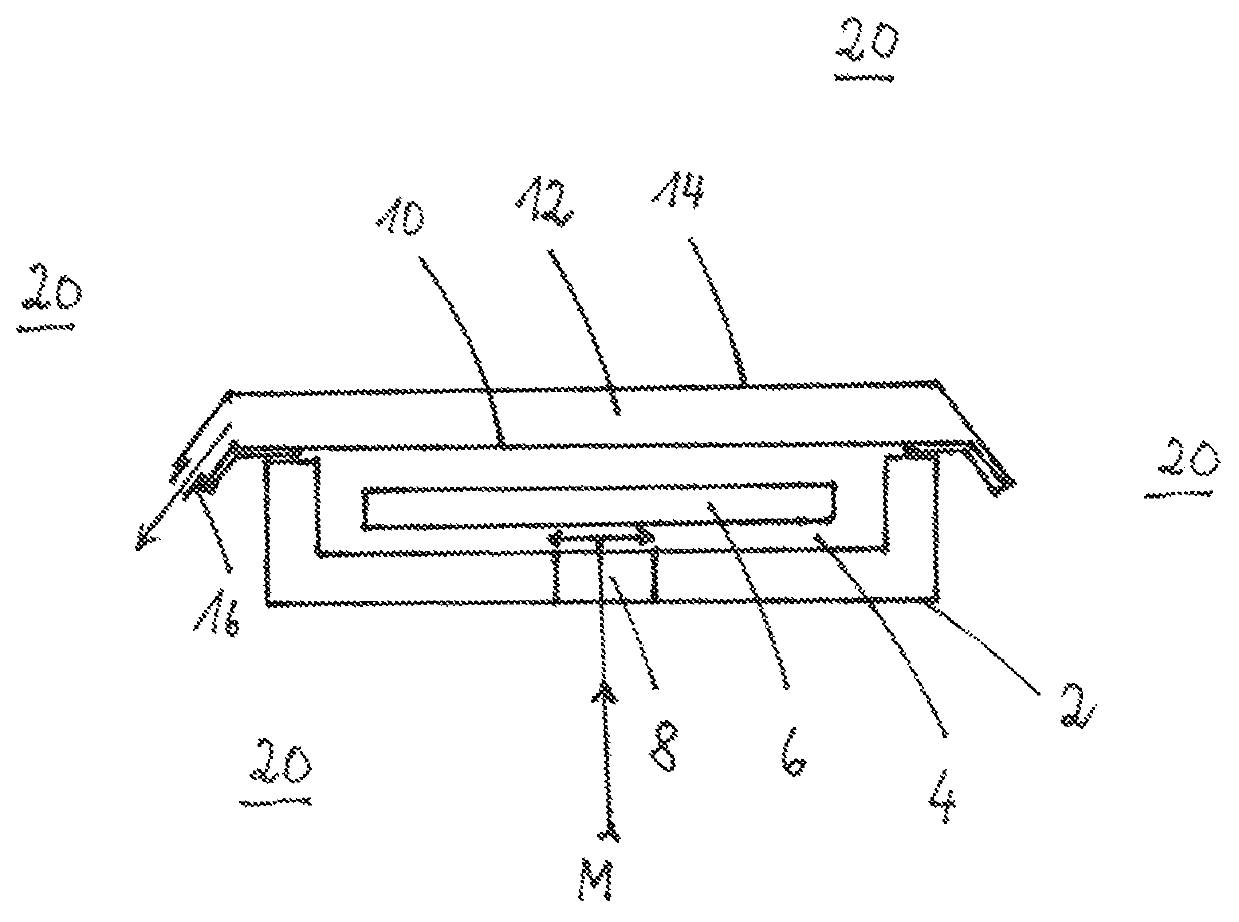Method for producing fiber composite components by means of a vacuum injection method
a vacuum injection and fiber composite technology, applied in the field of vacuum injection methods for fiber composite components, can solve the problems of high material cost, large quantity of expensive membrane materials, and high cost of materials, and achieve the effects of improving the static load capacity of the component, reducing the rejection rate, and improving the quality of the composite component produced with the separation material
- Summary
- Abstract
- Description
- Claims
- Application Information
AI Technical Summary
Benefits of technology
Problems solved by technology
Method used
Image
Examples
Embodiment Construction
[0039]In order to explain the method of the invention, a purely schematic illustration of an embodiment of a tool 2 for use with the invention is provided. The tool 2 comprised a component chamber 4. A fiber composite semifinished product 6 is positioned in the component chamber 4. Through inlet 8 a matrix material M can be introduced into the component chamber 4, as indicated by the arrow. The separation material 10 according to the invention is placed sealingly on top of the component chamber 4. The separation material 10 provides a boundary relative to the vacuum chamber 12, i.e., separates the component chamber 4 from the vacuum chamber 12. The vacuum chamber 12 and the component chamber 4 are sealed by a gas-tight and matrix material-tight cover material 14 relative to the tool environment 20 and to the exterior. The cover material 14 is connected at least at the edges to the separation material (separation membrane) 10 such that no gas from the exterior, from the tool environm...
PUM
| Property | Measurement | Unit |
|---|---|---|
| pore size | aaaaa | aaaaa |
| pore size | aaaaa | aaaaa |
| viscosity | aaaaa | aaaaa |
Abstract
Description
Claims
Application Information
 Login to View More
Login to View More - R&D
- Intellectual Property
- Life Sciences
- Materials
- Tech Scout
- Unparalleled Data Quality
- Higher Quality Content
- 60% Fewer Hallucinations
Browse by: Latest US Patents, China's latest patents, Technical Efficacy Thesaurus, Application Domain, Technology Topic, Popular Technical Reports.
© 2025 PatSnap. All rights reserved.Legal|Privacy policy|Modern Slavery Act Transparency Statement|Sitemap|About US| Contact US: help@patsnap.com

